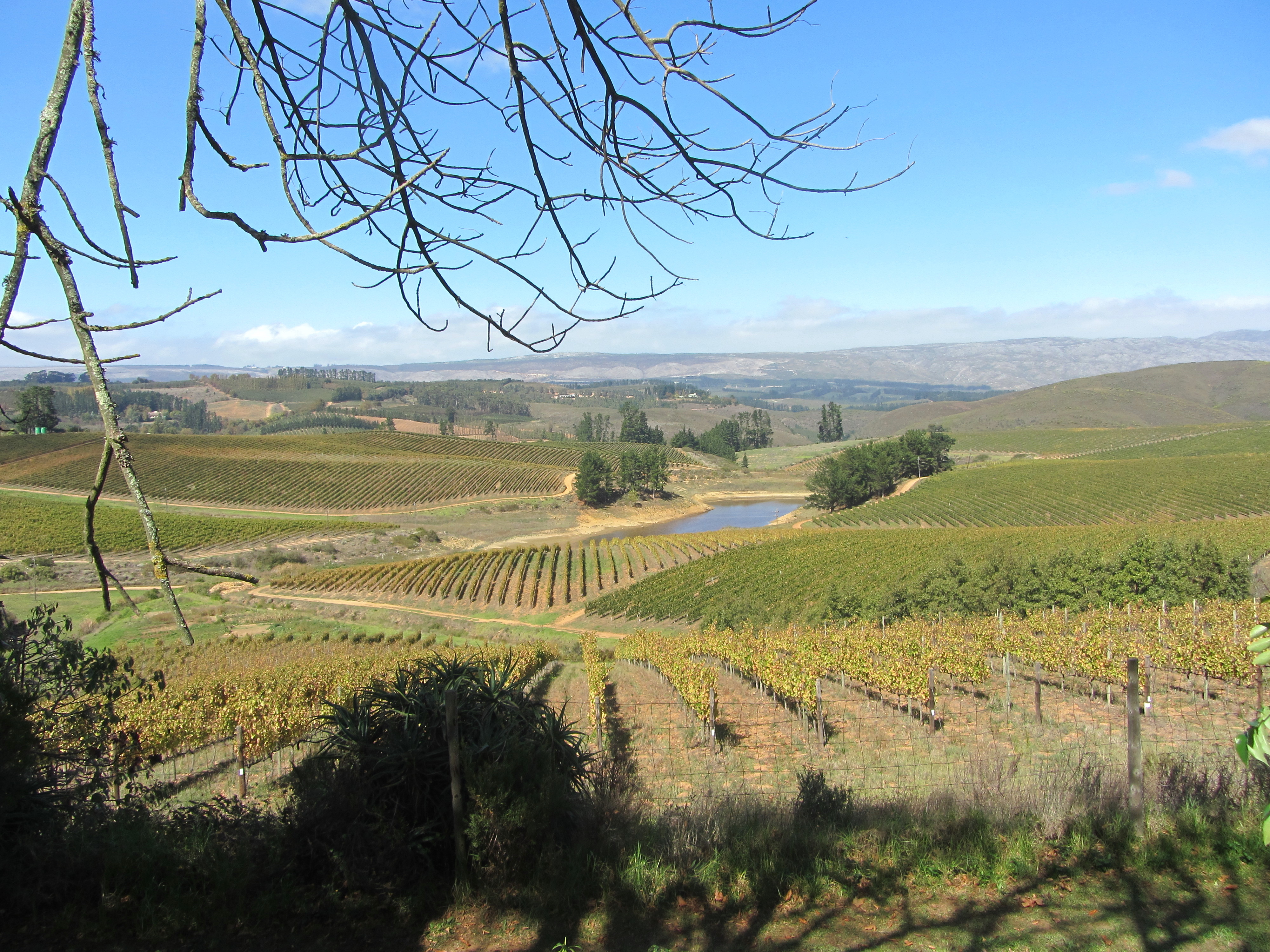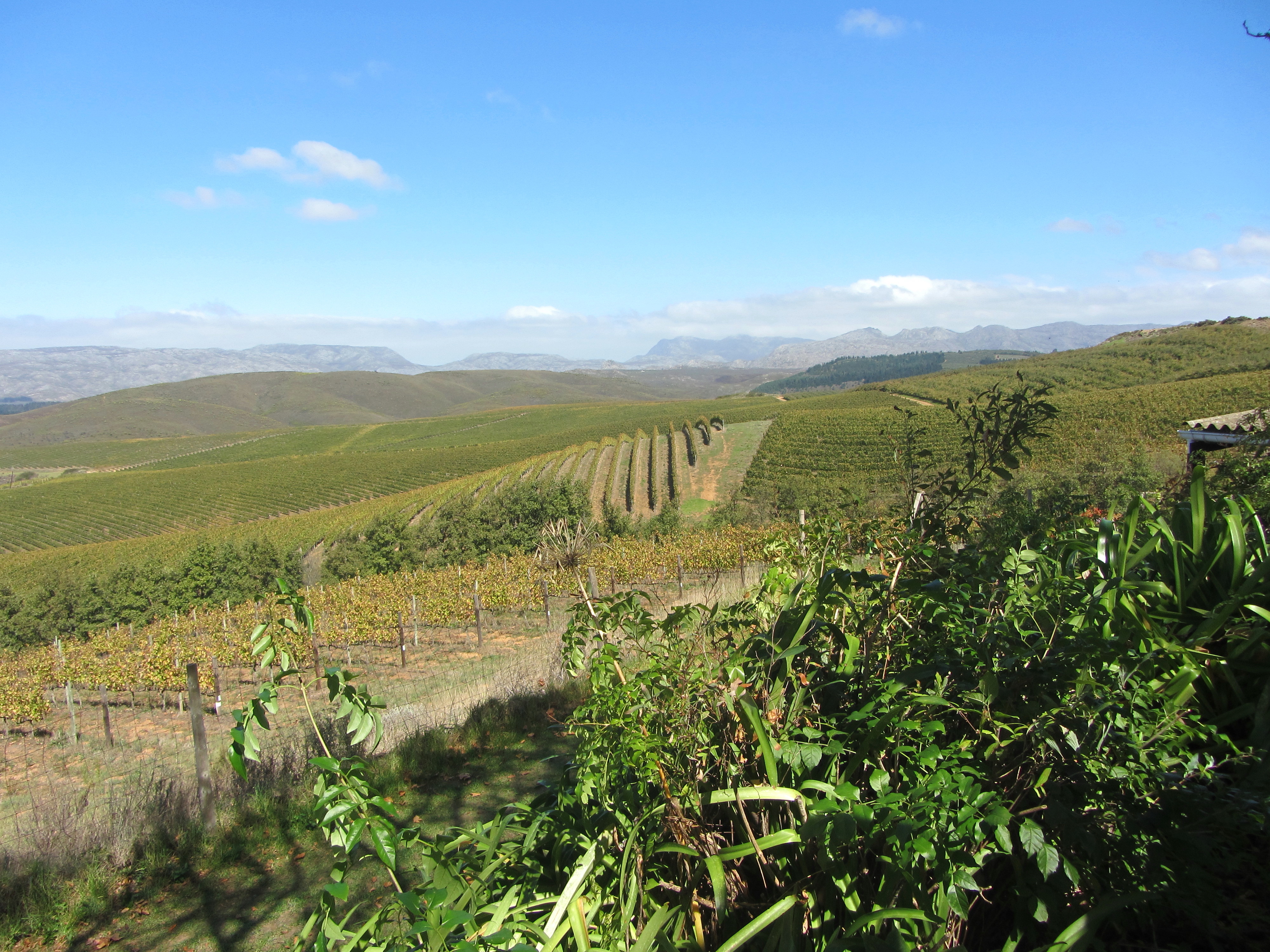Shiraz with a difference
Winemaker Richard Kershaw MW refers to the Elgin Valley as “a saucer”. Standing somewhere in the middle of this high-lying area, it’s plain to see why: it is surrounded by a rim of mountains which frame verdant, rolling troughs and peaks. More technically, Kershaw describes it as “situated on an inland, hexagonal-shaped plateau, at an altitude of 300 metres, surrounded by mountains, only 10 kilometres from the Atlantic Ocean.”

For many years Elgin has been associated with apples, temperature extremes ensuring sufficient cold units for this to be a most successful, profitable crop. While apples remain the dominant crop, over the past 20 years vines too have made their mark to the extent they now cover close to 830 hectares.
Ask any knowledgeable wine lover which grape varieties are most associated with the area and the answer is likely to be Sauvignon Blanc, Chardonnay and Pinot Noir. Shiraz is unlikely to be mentioned, even though it does account for just on 75 hectares.
Why then, I wondered, did Kershaw select Shiraz rather than the more popular Pinot Noir? He does make Pinot but for Naked Wines rather than his own Richard Kershaw Wines label, which consists of just Chardonnay and Syrah.
Firstly, he finds many Elgin Pinots too linear, sinewy, which is not what the consumer is seeking. He does qualify this by admitting different soils produce different styles, with Paul Cluver Estate Wines being more successful in a fleshy style. On the other hand, Syrah from Côte Rôtie in the Rhône has much personal appeal for Kershaw.
There are many factors that make Elgin a suitable area for an elegant, medium-weight style of Syrah, one that should appeal to wine lovers. Some of the major ones Kershaw mentions are that it’s the coolest wine region in South Africa (Region 2 on the Winkler scale); it receives cloud cover from the prevailing southeasterly wind in summer, thus blocking the sun, which helps to reduce temperatures and encourages slow ripening of the grapes. Other factors that achieve the same goal include marked diurnal temperatures (in summer these can dip to around 10°C at night, while during the day they rarely reach above the mid-20°C range); and some summer rainfall and the dew factor decrease the likelihood of vine stress, and also ensure the cover crop keeps going, and with it the benefit of nitrogen fixing and shading the soil.
Kershaw is doubtful that there are many other regions with similar conditions conducive to such a style of Syrah – maybe higher up in the Hemel-en-Aarde Valley – but he emphasises that there’s more to success or otherwise than the climate.
Viticulturally, he’s very focused on planting the best clones for the soils in specific parts of Elgin, a north-south planting orientation providing the most even ripening in each vine.
Like others, Kershaw maintains terroir cannot be authentically expressed without the human element. “Elgin’s cool climate alone doesn’t result in the elegant, medium-weight style I believe the area dictates; that comes down to the winemaker’s approach,” he says. “In South Africa, there is much more of a tendency to aim for a Barossa style – heavyweights, glistening with muscles – than the more elegant, subtle one. Even in our cooler area, leaving the grapes on the vine for longer will result in a bigger wine with higher alcohol.”
That is no doubt driven in the main by South African consumers’ preferences. In fact, Kershaw recalls with a laugh that he’s often been challenged by local consumers over the lower alcohols – around 13% – in his Syrah. He admits it’s a style much more appreciated in Europe, “particularly in France”, which amuses him.
Picking time then is an essential to the Kershaw style. “As harvest approaches, I taste every two days,” he says. He goes on to describe what he’s looking for: “Flavour. Is there fruit and intensity of fruit? Does the pulp break off from the seeds? What is their colour? How ripe are the stems? They can give a fresh element even if not entirely ripe. Is the tannin grassy, leather or powdery? Sometimes I don’t even bother with sugar levels if these other components seem ready to me.”
As far as winemaking is concerned “you’ve got to make it the way the area dictates”, Kershaw insists. The juice receives a gentle hand during fermentation. “One punch down per day for four minutes, so there’s very little extraction, and a cool ferment – we don’t get a hot ferment in this cooler area,” he explains. “In fact, the wine even goes through malolactic in the following spring, just as it does in France!”
Oaking is a mix of new and old barriques and up to 500 litres, all French. The end result is a translucent wine of medium-dark colour, the accent on red fruit with black cherries but also vibrant spice; medium weight with a velvety texture, soft but also with an element of shape and freshness; and fine and pliant powdery tannins, more savoury than sweet.
Ageing possibilities? Yes, of course. “The wine benefits from a decent, natural acid, those powdery, pliant tannins and savouriness. These should allow for more complex, tertiary flavours over eight to 10 years.”
Changes don’t come with age alone. “In a marginal area like Elgin, there are distinct differences between vintages; a more interesting prospect for the consumer, I believe,” Kershaw considers.

While he admits that Western Cape wine lovers are more receptive to his Syrah’s elegance, as with all burgeoning styles marketing plays an important role.
But Kershaw is not alone. There are others among the young guns who are heading in the same direction, even though they may not be making Syrah from Elgin fruit. Mick and Jeanine Craven are one such pair. One of their Syrahs comes from Faure in Stellenbosch, a mere ocean breeze from False Bay. They share Kershaw’s philosophy of elegance, lower alcohols (sometimes dipping below 12%), fruit and savoury tannins.
This is hardly a flood, barely a trickle of a move towards either greater elegance or a truer reflection of area, but where trendsetters start, others are likely to follow. And as international commentators keep noting, South Africa is currently one of the most exciting regions in the world. Long may this continue, thanks to elegant, medium-weight Syrahs.
– Angela Lloyd